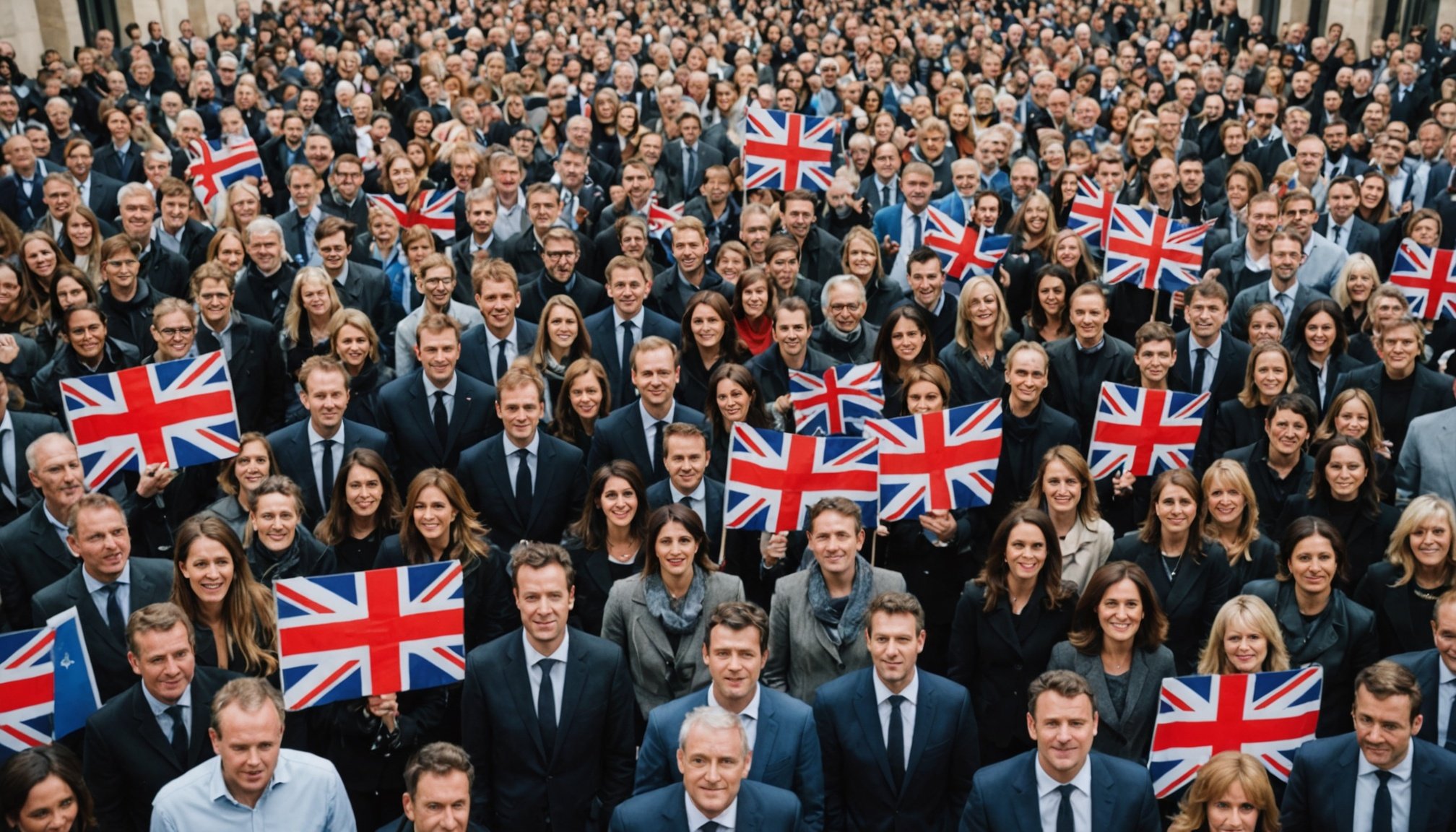Understanding Influencer Marketing in the UK
The influencer marketing scene in the UK is dynamic, with a rich tapestry of social personalities catering to diverse interests. Brands are increasingly tapping into these influencers, recognising the significance of tailoring messages to specific segments within their audience. Whether promoting wellness, fashion, or tech, targeting the right audience engagement is crucial for success.
UK market trends reveal a pivot towards micro and nano-influencers, who often boast higher engagement rates compared to their celebrity counterparts. This shift underscores the importance of authenticity and relatability in fostering trust and long-term consumer relationships. Micro-influencers, with their niche focus, tend to cultivate more profound connections with their followers, making them ideal for brands cultivating brand loyalty.
Also to see : Unlocking market insights: top resources for uk startups to conduct effective research
Emerging influencer marketing strategies in the UK also highlight the role of data-driven decision-making. By utilising analytics tools, brands can assess potential influencers’ engagement metrics, ensuring collaboration with personalities who can genuinely sway opinions and influence purchasing decisions. Additionally, interactive content—like live streams, polls, and Q&A sessions—enables influencers to captivate audiences, making them active participants rather than passive viewers.
Ultimately, the UK’s influencer marketing landscape is shaped by targeting the right audience, leveraging authentic voices, and embracing innovative engagement tactics. This evolving landscape presents fertile ground for robust influencer-brand collaborations, promising increased returns and deeper market penetration.
In the same genre : Uk business cybersecurity: strategies for safeguarding against online threats
Defining Your Goals and Objectives
In the ever-evolving world of influencer marketing, it’s imperative for brands to set clear marketing objectives and form precise campaign goals. Without distinct goals, measuring success can be quite the challenge. Brands should focus on how these objectives align both with their overall business strategy and the ever-changing UK market landscape. Whether it’s increasing brand awareness or driving direct sales, having a tangible direction helps streamline efforts and motivates results-oriented strategies.
It is crucial for objectives to be measurable. This enables businesses to gauge effectiveness and adjust tactics where necessary. Such measurables might include tracking engagement rates, analysing audience demographics, or computing the return on investment (ROI) to understand the broader impact.
To draw a parallel with the SQuAD method, businesses must continually answer: “Did we achieve our specific objectives?” Precision in this analysis is akin to pinpointing the correct answer with shared tokens in a dataset. By setting out with precise, quantifiable goals, brands can better align their influence-driven ventures with long-term growth, optimising both resources and partnerships effectively. This foresight ensures not only campaign success but fosters sustainable business growth.
Identifying the Right Influencers
Selecting the right influencers is crucial for a brand’s success. Companies need to prioritise influencer selection by focusing on audience alignment. But how do you determine if an influencer aligns with your audience? Precision in this selection can be achieved by examining engagement metrics such as likes, comments, and shares. These metrics reveal how actively an influencer’s audience participates in their content, indicating potential audience alignment.
A collaboration strategy should consider the influencer’s content style and whether it mirrors the brand’s voice. Effective collaboration occurs when both the influencer and the brand resonate with similar values.
How have brands succeeded in the past? A notable example comes from a skincare brand that partnered with micro-influencers who genuinely used and loved their products. This approach yielded authentic testimonials that were well-received by their community. The result was a highly engaged audience, which boosted product awareness and captured new customers.
In conclusion, collaboration strategy should be grounded in selecting influencers not just because of their following, but based on their ability to engage and maintain an aligned audience. Aligning brand values with influencer content amplifies authenticity, ensuring impactful and successful collaborations.
Crafting Compelling Campaigns
Developing creative strategies within influencer marketing involves weaving relatable narratives that captivate your audience. It’s paramount that brands focus on content planning that utilises authentic storytelling to establish a genuine connection with their audience. Begin by understanding the values and interests of your target market, ensuring that your campaign aligns with these elements to boost relatability and resonance.
Effectively engaging your audience requires versatile engagement tactics. Think of interactive elements such as polls, challenges, or even collaborations between multiple influencers to keep content dynamic and enthralling. The goal is making audiences feel like active participants in the journey, rather than passive observers.
Key components of a successful campaign include:
- Authenticity: Ensures content is believable and relatable.
- Consistency: Keeps the message uniform across different platforms.
- Interactivity: Encourages audience participation.
In crafting these campaigns, one should consider diverse platforms and formats. This might involve live streams or behind-the-scenes content which provides transparency and builds trust. By effectively executing these strategies, brands can increase campaign visibility and create a lasting impact on their target audience, fostering long-term consumer relationships.
Measuring Campaign Effectiveness
When evaluating influencer marketing campaigns, identifying key campaign metrics is indispensable for assessment. Metrics such as engagement rates, reach, impressions, and conversion rates provide a comprehensive view of performance. These quantitative measures are crucial for understanding how well your campaign resonates with the target audience.
To delve deeper, employing sophisticated tools for performance analysis can aid in dissecting these metrics. Platforms like Google Analytics or specific influencer marketing software offer insights into each campaign’s impact on brand recognition and customer engagement. This detailed analysis aids in uncovering which elements of the campaign were successful and where improvements are warranted.
A vital aspect of measuring effectiveness lies in assessing the return on investment (ROI). By comparing campaign costs with the value generated, businesses can determine profitability. ROI calculations should account for direct sales from the campaign and intangible benefits like increased brand visibility and strengthened consumer loyalty.
By employing precise methodologies from the Stanford Question Answering Dataset (SQuAD), brands can ensure they extract the most relevant insights from their data. The ability to interpret these insights effectively positions companies to refine their strategies, ensuring future campaigns are both impactful and profitable.
Overcoming Common Challenges
Navigating influencer marketing in the UK presents unique challenges. Brands often struggle with finding the right influencers who align perfectly with their identity. This misalignment can lead to messaging that feels forced or inauthentic, ultimately failing to engage the desired audience. Moreover, the highly competitive landscape requires brands to differentiate themselves swiftly to capture attention.
To overcome such challenges, developing effective resolution strategies is essential. Begin by conducting thorough research to understand the influencer’s audience and values. This foundational approach ensures a better match and fosters genuine collaboration. Leveraging data analytics tools can also provide insights into potential influencers, helping you determine if they have the potential to truly influence your target market.
Next, focus on risk management and ensuring compliance within influencer partnerships. Establish clear guidelines and contracts defining expectations and deliverables. Such preemptive measures mitigate future controversies and protect brand integrity. Implementing a crisis management plan can also prove valuable, as it prepares your team to swiftly handle any unforeseen issues.
Ultimately, investing time in crafting well-defined strategies and effective risk management protocols enables brands to confidently navigate the influencer landscape, ensuring successful collaborations and substantial marketing impact.
Case Studies of Successful UK Campaigns
Exploring case studies offers valuable insights into the art of crafting successful influencer marketing campaigns. By examining these examples, brands can glean effective strategies that drive impactful results.
One standout campaign is by a UK-based skincare company that partnered with micro-influencers who genuinely used their products. These influencers shared honest reviews and daily usage tips, fostering authentic connections with their audience. The campaign resulted in a significant boost in brand visibility and a surge in product sales, highlighting the effectiveness of authenticity and genuine engagement.
Another success story involves a fitness brand collaborating with fitness enthusiasts to create engaging content around workout routines and health tips. This approach celebrated audience engagement by encouraging followers to share their progress, thereby enhancing community interaction and driving brand loyalty.
Lessons from these success stories underline the importance of aligning influencer collaborations with the brand’s core messaging and values. It also emphasises the power of niche targeting—focusing on specific audience segments leads to more profound connections and higher conversion rates. By intending to leverage these insights, companies can refine their influencer marketing strategies, establishing a more robust presence in the competitive UK market landscape.
Future Trends in Influencer Marketing
As influencer marketing continues to transform in the UK, staying updated with future trends is crucial for brands aiming to maintain their competitive edge. A primary trend predicts an increased preference for authenticity, with audiences gravitating towards content that feels genuine and relatable. This evolution demands an adaptation in industry predictions, focusing on nurturing real connections over superficial engagements.
There’s a notable shift towards evolving strategies, where brands are likely to leverage artificial intelligence for enhanced audience engagement. AI can help analyse vast datasets to forecast trends, streamline campaign planning, and personalise interactions. Interactive content like augmented or virtual reality experiences is expected to become more prominent, offering immersive ways to engage with potential customers.
The rise of nano-influencers is another anticipated trend, driven by their ability to foster closer relationships with niche groups. This positively impacts audience engagement by increasing trust and fostering community-driven content.
Furthermore, social media platforms are continually evolving, prompting marketers to stay adaptable. Brands must integrate these industry predictions into their strategies to remain relevant. Embracing these emerging trends ensures not only successful campaigns but also long-term growth in a dynamic market.







